Our Stories: CDC in Kenya
Medically Assisted Therapy Clinic in Kisumu, Kenya Offers Hope to High-risk HIV Group
April 6th, 2017 11:00 am ET - U.S. CDC Kenya Office
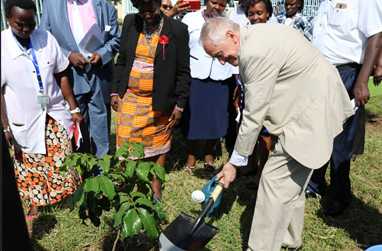
On April 6, 2017, CDC Kenya along with key partners celebrated the opening of the Jaramogi Oginga Odinga Teaching and Referral Hospital (JOOTRH) Wellness Center. The JOOTRH Wellness Center is one of six clinics in Kenya that have been authorized to provide medically assisted therapy (MAT) to people who inject drugs.
World AIDS Day Pre-Event in Kenya – A Celebration of Leadership. Commitment. Impact.
November 29th, 2016 11:00 am ET - U.S. CDC Kenya Office
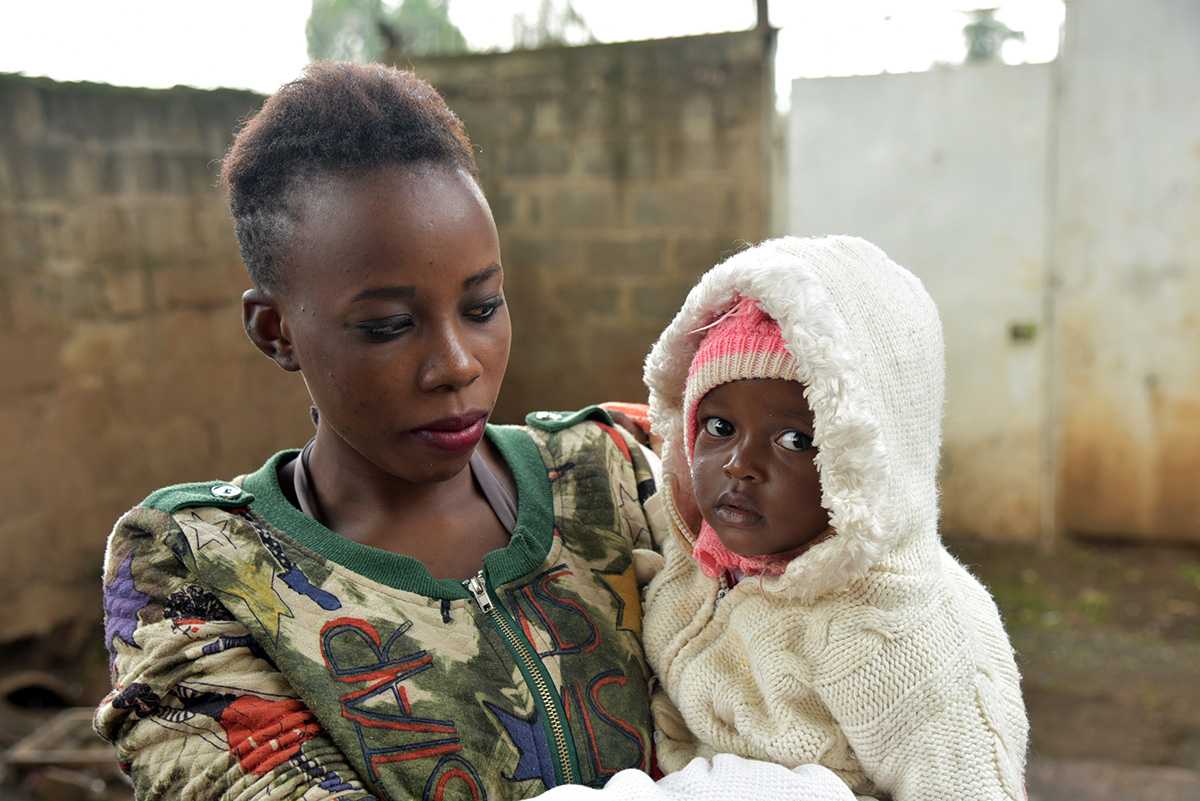
Leadership was strongly demonstrated in Nairobi, Kenya on November 29th, 2016, when implementing partners came together to lead the planning and coordination efforts of the World AIDS Day Pre-event at the St. Johns Community Centre in Pumwani.
Kenyan FBOs Take On HIV/AIDS
November 3rd, 2016 11:00 am ET - U.S. CDC Kenya Office
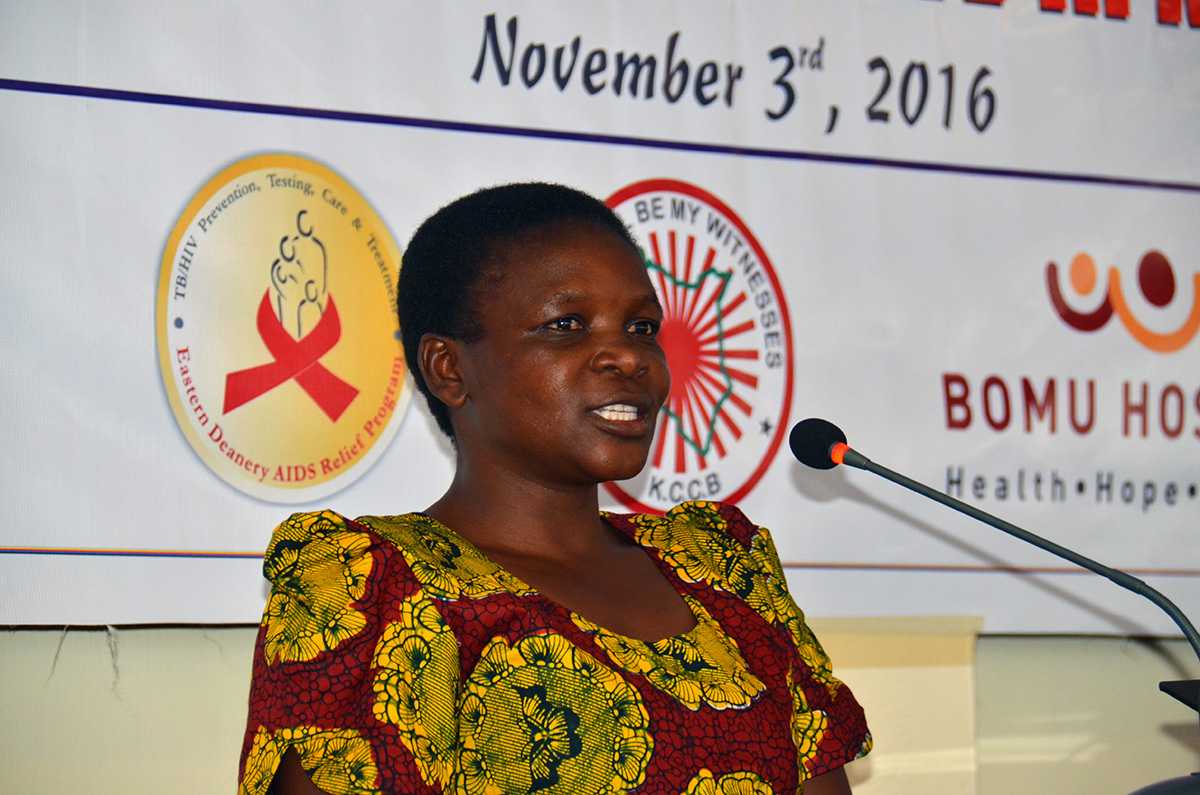
When organizations are determined to join hands and work across lines of cultural and religious beliefs, the results are astounding.
DGHT Director, Dr. Shannon Hader Visits Kenya
October 24, 2016 11:00 am ET - U.S. CDC Kenya Office
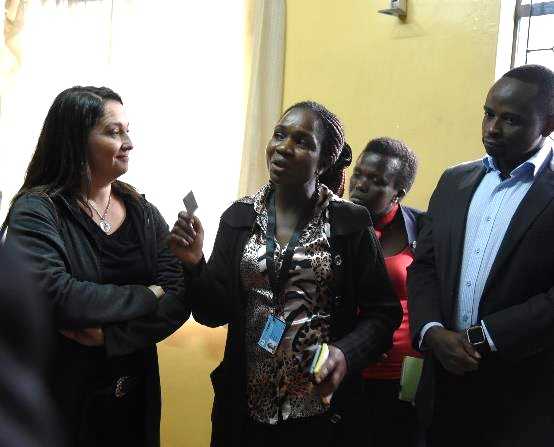
On September 17th, 2016 Shannon Hader, MD, MPH, Director of CDC’s Division of Global HIV & TB (DGHT), arrived in Nairobi, Kenya to see CDC’s field work in HIV services, TB control and treatment and other emerging public health areas...
New Hope in Combatting an Old Scourge - Rotavirus Vaccine in Kenya
July 25, 2016 1:00 pm ET - U.S. CDC Kenya Office
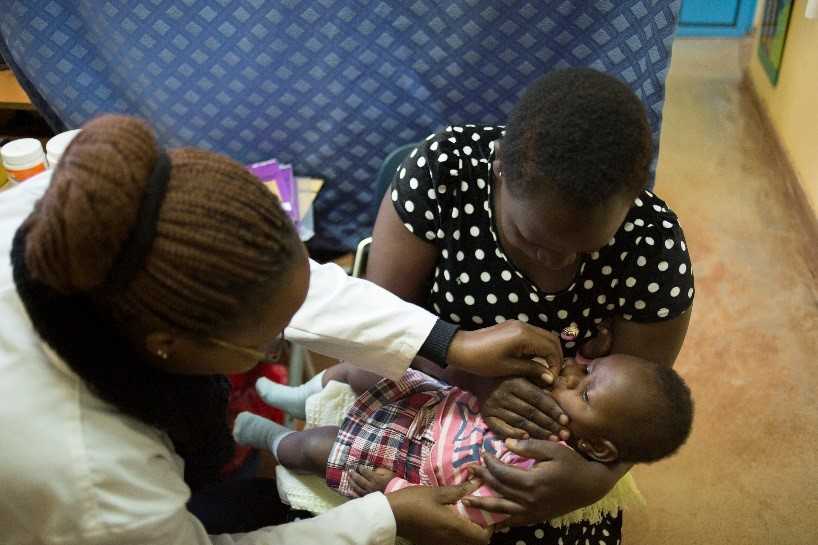
Unless you work in public health, it’s hard to grasp that almost all children who haven’t been vaccinated will have rotavirus before their 5th birthday.
Rotavirus is the most common cause of severe gastroenteritis among children worldwide...
Rosemary’s Journey: Kenya’s First Medically Assisted Therapy Program to Reduce HIV Transmission among People Who Inject Drugs
March 23, 2016 1:00 pm ET - U.S. CDC Kenya Office
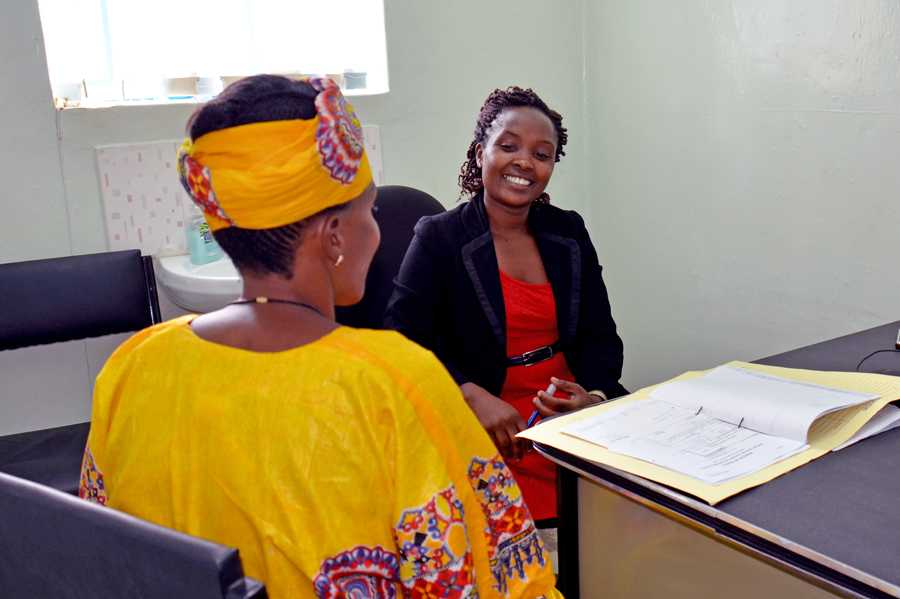
Rosemary traces the scar on her right hand where she used to inject heroin, recounting her 25 years of addiction to the opioid drug. “Sometimes I would miss the vein when I injected myself,” she recalls. In 2012 she developed a severe infection in her hand. “The doctors said they might have to amputate.”
In one of the clinical rooms at the Medically Assisted Therapy (MAT) clinic at Mathari National Teaching and Referral Hospital, Rosemary recounts the toll that heroin took on her mental and physical health, and her relationship with her family...
An AIDS-free Future: CDC Helping Young Women Achieve Their DREAMS
November 25, 2015 1:00 pm ET - U.S. CDC Kenya Office
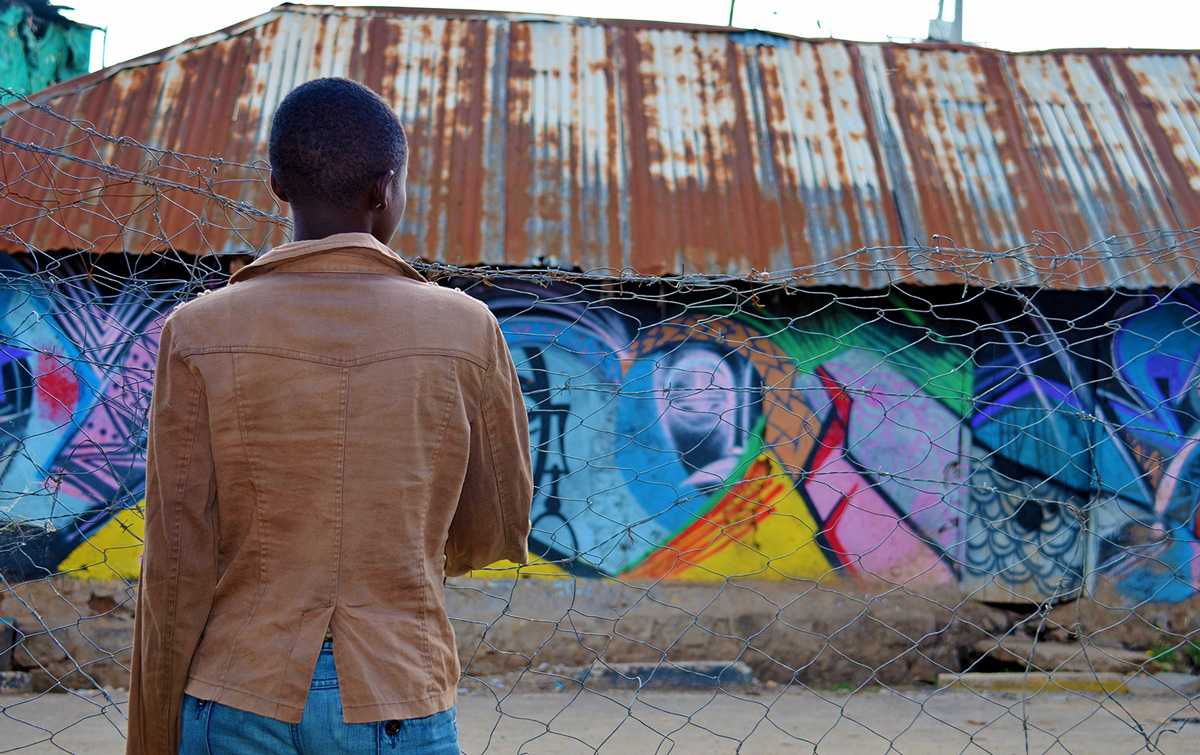
When you meet Marlyne, you can sense that she has a strength and determination that belies her tender age. Like many 13-year-old girls in Kenya, she dreams of a better life for herself and her family, and she is willing to work hard to achieve her goals.
She leaves for school at 6:30 every morning and doesn’t return home until nearly 7:00 at night. In a country that does not offer subsidized secondary education to all students, she is spending nearly 12 hours a day studying for the exams that will determine whether she can secure a spot in one of Kenya’s most prestigious public high schools.
CDC Working to Eliminate Mother-to Child Transmission in Kenya
November 23, 2015 1:00 pm ET - U.S. CDC Kenya Office

“I first learned I was HIV positive in 2007, when I was pregnant with my first child,” says Priscilla, as she shares her story from Komarock Clinic, in Nairobi, Kenya, which is run by CDC Kenya partner Eastern Deanery AIDS Relief Program (EDARP).
At 29 weeks into her pregnancy, she was provided with nevirapine to reduce the risk of transmission to her unborn child. After delivery, her baby boy was given nevirapine for 7 days and she continued on Septrin to reduce risk of opportunistic infections. Her son is now 8 years old, healthy and HIV negative.
Kenya makes great strides towards Rabies Elimination
November 3, 2015 1:00 pm ET - U.S. CDC Kenya Office
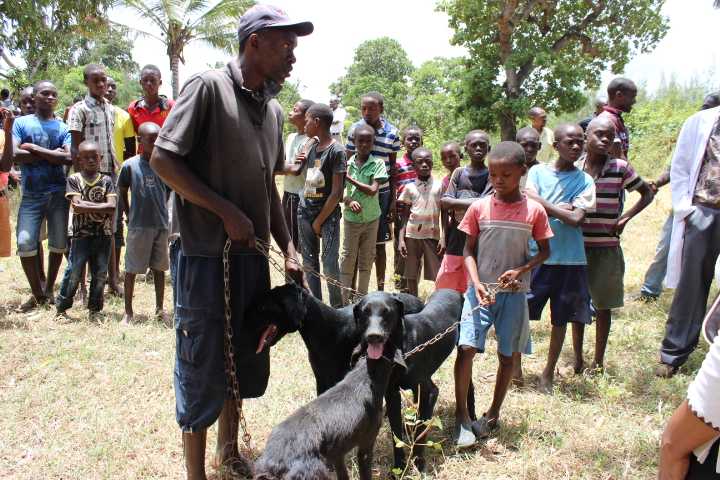
Dogs enjoy a unique relationship with humans and share a special bond. But rabies can easily tear that bond to pieces. Rabies is a neglected zoonotic disease that is nearly always fatal in humans if appropriate preventive measures are not taken after exposure. Worldwide, it causes approximately 60,000 deaths annually mainly in developing countries with one person dying of rabies every 10 minutes. More than 95% of human deaths occur in Africa and Asia- and children below 15 years of age are at the greatest risk of rabies exposure.
Kenya joins the world in ‘Closing the Immunization Gap’
April 27, 2015 1:00 pm ET - U.S. CDC Kenya Office
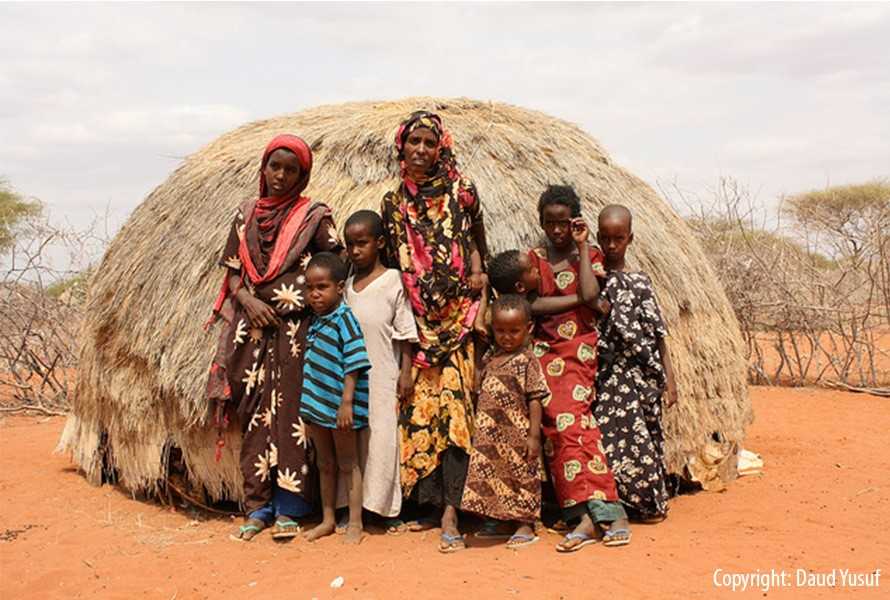
The theme for this year’s World Immunization Week is “Closing the Immunization Gap” a slogan which challenges countries and public health practitioners around the world to address inequity in vaccination coverage.
According to the 2014 Kenya Demographic and Health Survey (KDHS), about two of every three Kenyan children are considered “fully immunized.” While this is an important accomplishment, we recognize that our work is not complete until every child is fully immunized against preventable diseases.
Kenya Exceeds Goals to Address TB and HIV Coinfection
March 23, 2015 12:00 pm ET - U.S. CDC Kenya Office
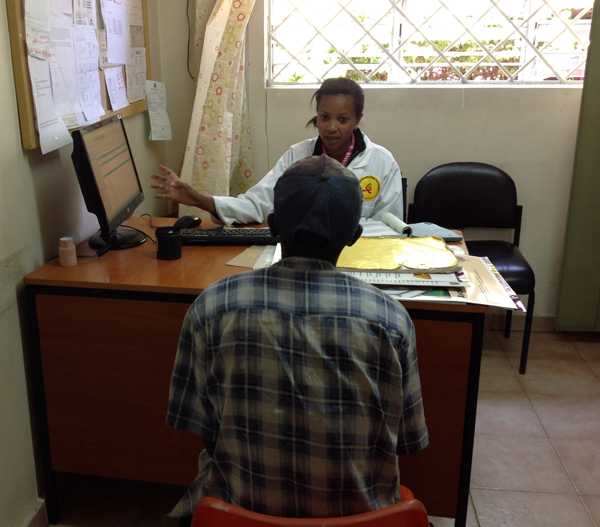
Among persons living with HIV in Kenya, tuberculosis (TB) is the single leading cause of death. With more than 35% of those with TB infected with HIV, TB and HIV coinfection creates a substantial burden on Kenya’s health system and among patients, their families, and local communities.
Dr. Herman Weyenga, TB/HIV technical advisor for CDC Kenya, works closely with the Ministry of Health in Kenya. “To address the challenge of TB among people with HIV, the government of Kenya, with support from partners like CDC, has made changes to public health programs and policies that have helped the country exceed its goals of identifying and treating people with TB/HIV coinfection.”
A Consequence of Conflict: The Spread of Multidrug-Resistant Tuberculosis
March 23, 2015 11:00 am ET - U.S. CDC Kenya Office
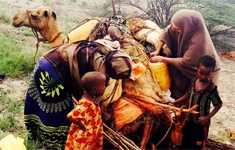
For more than 20 years, Kenya has been providing asylum to people fleeing civil war and conflict from Somalia. Many first reach Dadaab refugee camp, located in Garissa County, Kenya, about 50 miles from the Somali border where the United Nations High Commissioner for Refugees (UNHCR) and partners provide humanitarian relief and protection assistance. In recent years, Dadaab has experienced a new arrival trend – in addition to those fleeing insecurity, persons with a diagnosis of multidrug-resistant tuberculosis (MDR TB) have crossed the border to seek treatment.
Focus, Partner, Achieve: Using Evidence to Achieve an AIDS-Free Generation in Kenya
November 18, 2014 1:00 pm ET - U.S. CDC Kenya Office
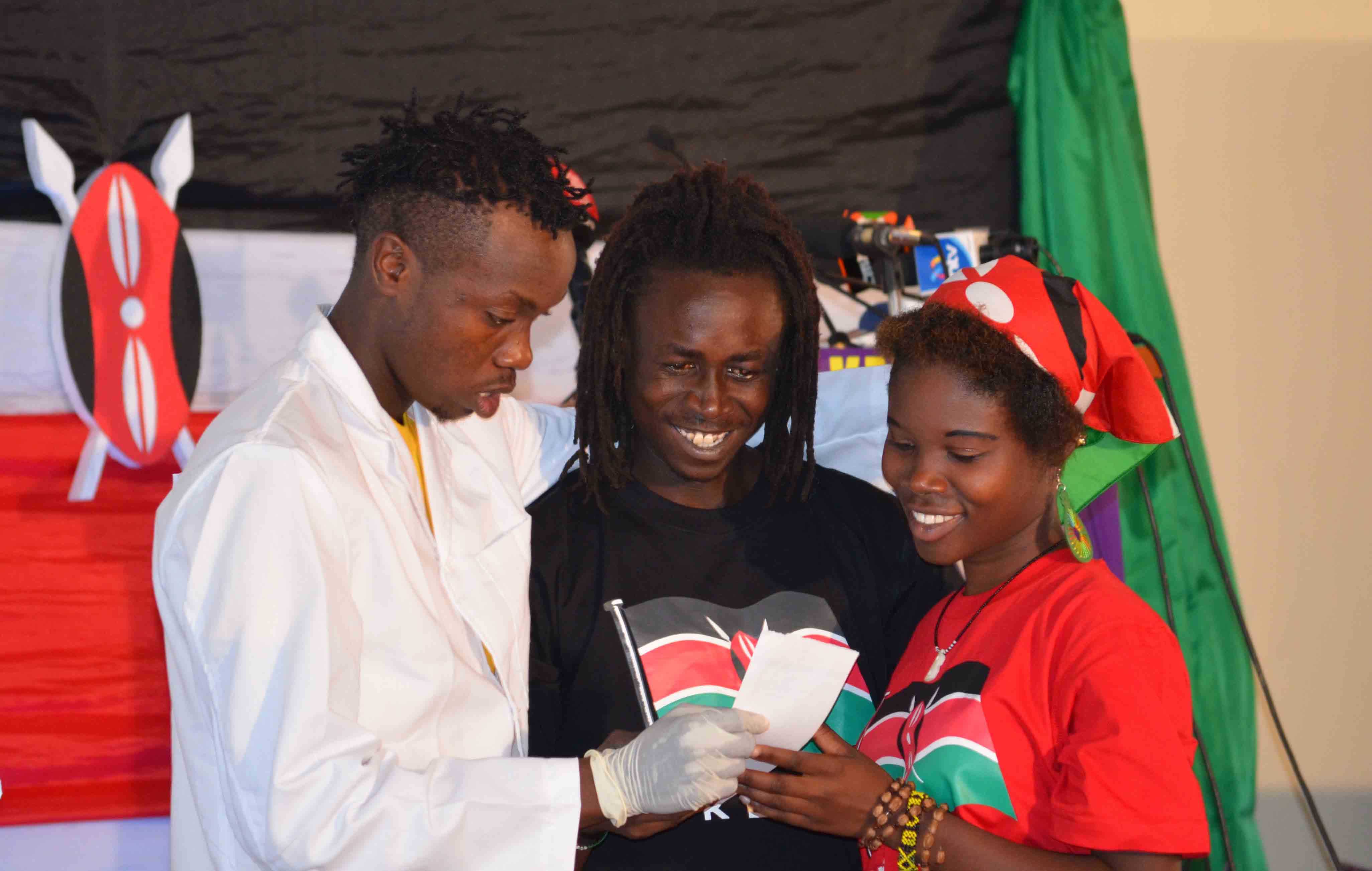
Since the launch of the U.S. President’s Emergency Plan for AIDS Relief (PEPFAR)External Web Site Icon in 2003, CDC has used its expertise in epidemiology and laboratory systems, and its long-standing partnership in public health research in Kenya, to help the country develop more focused HIV interventions that are implemented when, where, and among whom they are needed.
As it works toward achieving an AIDS-Free Generation, one tool that has aided Kenya in making better decisions about its HIV programs is the PEPFAR and CDC-supported Kenya AIDS Indicator Survey (KAIS).
Beginning Life Anew: An HIV Free Child
November 25, 2014 12:00 pm ET - U.S. CDC Kenya Office
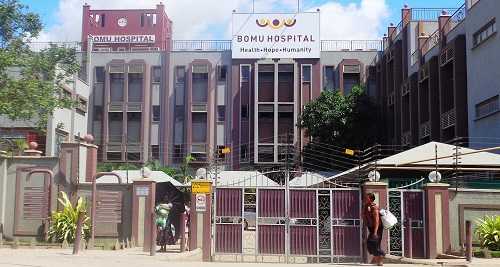
For all couples, the prospect of bringing a child into the world brings joy and excitement as well as concern about their future child’s health. But for couples in which one or both partners are living with HIV, health concerns make the decision to conceive a child a difficult one.
Giving Blood, Giving Life
June 13, 2014 2:00 pm ET - U.S. CDC Kenya Office
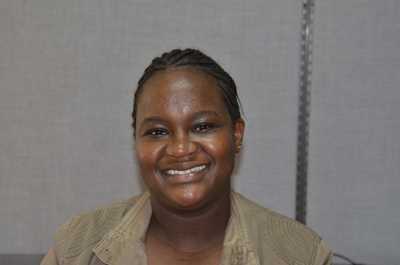
Teresia Kangwele had thought about donating blood for a long time. As a program assistant who provides support to staff working on public health activities, she knew that someone who was suffering from an injury or illness, or needed surgery, would need blood to save their life. But, like many people, she had questions and concerns.
US Refugee Admissions Program: Improving Health of US-bound Refugees
April 28, 2014 12:00 pm ET - Warren Dalal, Program Support Unit, Immigrant Refugee Migrant Health Branch, Division of Global Migration and Quarantine
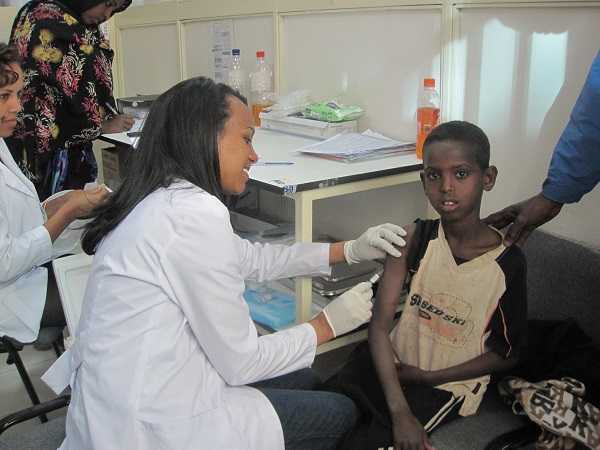
The waiting area of the vaccination room at the International Organization for Migration (IOM) clinic in Kakuma refugee camp is buzzing with activity on this particular morning. Today is the last day of the three-day medical health assessment process for the United States (US) refugee resettlement program in Kakuma. This first round of vaccination being the last stage of their initial health assessment.
Sharing Global Health Successes and Challenges: Conference on Retroviruses and Opportunistic Infections (CROI)
March 13, 2014 2:00 pm ET - U.S. CDC Kenya Office
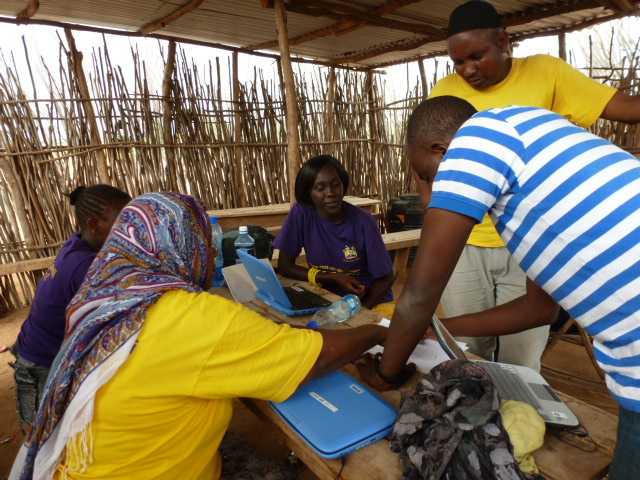
Making an impact on the HIV epidemic in Kenya requires knowing what your successes are and where your challenges lie. At this week’s Conference on Retroviruses and Opportunistic Infections (CROI) 2014, Dr. William Maina of the Kenya Ministry of Health presented data from the Kenya AIDS Indicator Survey 2012 (KAIS 2012), its second national population-based household survey after the first survey conducted in 2007.
Typhoid Fever Targets Children from Kenyan Urban Slums
January 9, 2014 1:22 pm ET - U.S. CDC-Kenya Office
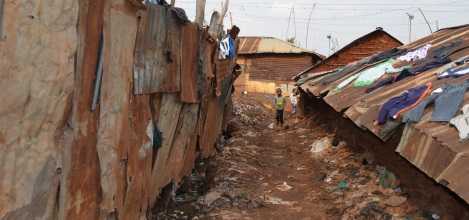
About 200,000 people live in Kibera, a slum on the outskirts of Nairobi, Kenya, and the largest informal settlement in East Africa. With an estimated one-pit latrine for every 200 people, residents use plastic bags for relief and then dispose of them anywhere. This practice, known as ‘flying toilets’, is more common at night among women and children concerned about the area’s lack of security. Without sanitation facilities to contain and dispose of human feces, those living nearby are at risk for enteric diseases (those that cause diarrhea, nausea, or vomiting), such as typhoid fever.
Improving HIV Diagnosis and Linkage to Care: Point-of-Care Tests
November 26, 2013 1:00 pm ET - U.S. CDC-Kenya Office
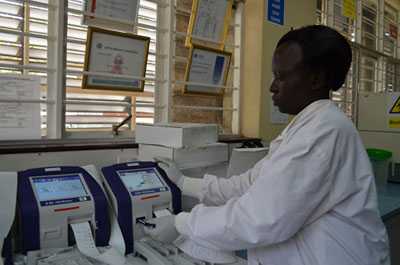
While antiretroviral therapy is now more widely available in Kenya, expanding clinical and laboratory services and providing better linkage to care for those who test HIV positive is critical to ensuring that more people receive HIV care and treatment. To address this need, CDC is working with the Kenya Medical Research Institute (KEMRI) to conduct studies on the expansion of antiretroviral services by providing point-of-care testing of CD4 counts and HIV viral load, two important tests for managing the care of persons living with HIV.
Kenya's progress towards sustainable health
October 21, 2013 10:48 am ET - Tom Kenyon, MD, MPH, Director, Center for Global Health

Recent events in Nairobi have understandably focused the world on security challenges in Kenya. In that context it is important to recognize inspiring public health advances that represent innovative collaboration between CDC and our Kenyan partners to increase health security for Kenya and the global community. I made a two-day trip to visit our CDC-Kenya programs – a quick stop before commissioning the new CDC Global Disease Detection Center in Dhaka, Bangladesh. While I have previously worked as CDC Country Director in Ethiopia and had a general idea of what to expect, visiting Kenya reminded me that each of our CDC country offices has developed unique programs and solutions to address public health issues affecting local populations.
Souda's Story: CDC Support Benefits a Rwandan Refugee
August 2, 2013 11:00 am ET - U.S. CDC-Kenya Office

Souda is a Rwandan refugee who arrived in Kakuma Refugee Camp in January 2005. Her friendly demeanor and open smile belie the magnitude of what she has seen through the years. The more recent chapters of Souda's life begin with the journey she made to her current home, which was long and grueling. Souda left Rwanda in September 2004, passing through the Congo and Uganda before finding safety on the arid land of northwest Kenya more than four months later. However, the hardships Souda has endured are not limited to the persecution she faced in her native Rwanda or her daily life as a refugee in this camp of more than 120,000 people.
Stomping Out Malaria in Pregnancy
April 24, 2013, 5:00 pm ET - U.S. CDC Kenya Office
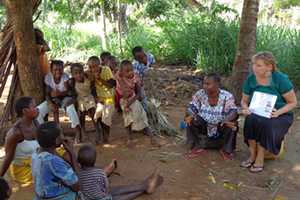
Launched in 2005, the President's Malaria Initiative (PMI) is a key component of the U.S. government's global health strategy with the goal of reducing by half the burden of malaria in at-risk populations in 19 African countries, including Kenya. PMI is an interagency initiative led by the U.S. Agency for International Development (USAID) and implemented together with CDC. Partnerships are at the heart of PMI's strategy, and PMI works closely with Peace Corps through the Stomp Out Malaria in Africa Initiative. PMI-Kenya currently supports three Peace Corps volunteers to implement malaria activities at the community level.
Improving Indoor Air Quality in Rural Kenya
January 25, 2013, 5:00 pm ET - U.S. CDC Kenya Office
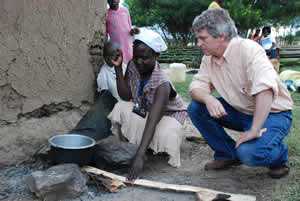
Secretary Clinton launched the Global Alliance for Clean Cookstoves in 2010 with the aim of saving lives, improving livelihoods, empowering women, and combating climate change by creating a viable commercial market for clean and efficient cookstoves and fuel.
The Centers for Disease Control and Prevention (CDC) has joined the Alliance, which aims to help 100 million households adopt cleaner cookstove alternatives by 2020 through scientific validation of health benefits—CDC's role—and novel marketing initiatives that will aid local economies to help make clean-burning cookstoves available to all who need them.
Irene's Story: Evidence-Based HIV Prevention Interventions Support Vulnerable Children
Novenber 29, 2012 3:00 pm ET - U.S. CDC-Kenya Office

Tears rolled down Irene's cheeks as she narrated how she had watched her mother die in her bed.
For years, the 17 year-old had struggled to care for her ailing mother and two siblings. Irene could not afford the drugs prescribed and the nutrition required by her mother. With no ability to save the only parent she knew, Irene could barely express her anger, helplessness and hopelessness. A resident in Mukuru Slums, her mother finally succumbed to tuberculosis in August 2009.
With little education and no skills, Irene has grown up in abject poverty without a father figure and without adult support. She was the sole provider for her two younger siblings. She turned to sex work in 2009 when she was 16 to be able to supply basic needs to their family. "It was not my wish but fate pushed me that far. I can't express enough the extreme emotional turmoil I have undergone but all I know is that life was full of frustrations and weariness," said Irene.
Putting Nomadic Pastoralists on the Map
October 23, 2012 4:00 pm ET - U.S. CDC-Kenya Office
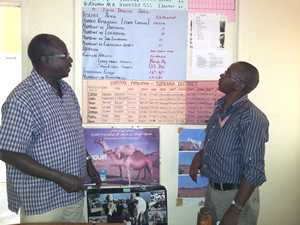
The CDC "Nomads Project" was piloted in northern Nigeria in 2011 and brought to scale in 2012 through funding from USAID. The concept is now being piloted by CDC-Kenya in collaboration with CDC's Global Immunization Division. In addition to bilateral government and NGO partners in Kenya and Nigeria, CDC collaborates with colleagues from WHO, UNICEF, and FAO as part of CDC's effort to eradicate polio.
Health care systems are designed to meet the needs of the population in the communities where they exist, generally addressing the most urgent health needs, and providing services in a culturally familiar context. But what if that "community" is a mobile one? Many of the things we take for granted — continuity of care or even familiarity with the language and customs among health care providers — can vary from region to region.
Restoring Health for Kenyans with HIV: Komarock Clinic, Nairobi
October 2, 2012 1:00 pm ET - U.S. CDC-Kenya Office

Ask Rose Simiyu, a nurse trained in HIV care and treatment who works at the Eastern Deanery AIDS Relief Program's Komarock Clinic in Nairobi, Kenya, what she like most about her job and she has an immediate response: watching her patients regain their health in as little as two months of starting the antiretroviral therapy (ART) that the clinic provides free of charge to community members living with HIV.
"We make sure they have the correct diagnoses and then provide the care and treatment they need to be stable and to take care of their families," she adds.
Our Research in Kenya: Finding Ways to Improve HIV Treatment Access and Outcomes
July 26th, 2012 12:01 pm ET - Jane Mwangi, U.S. CDC-Kenya Office
This week, as scientists and public health partners meet at the International AIDS Society (AIDS 2012) meeting in Washington, D.C., one of the key challenges for the U.S. President's Emergency Plan for AIDS Relief (PEPFAR) is to continue to increase the numbers of individuals on antiretroviral therapy (ART) while making sure that those who are currently on ART get quality care.
Increasing access to improved clinical management in resource-limited settings and identifying persons on ART whose treatment is beginning to fail is a key area where CDC, one of the key U.S. agencies implementing PEPFAR, brings its public health research and evaluation expertise to the table.
Today is the Day
June 20th, 2012 11:00 am ET - U.S. CDC-Kenya Office
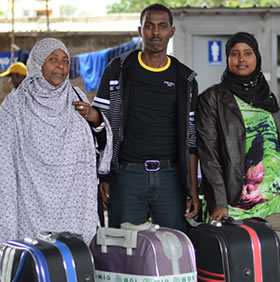
CDC-Kenya's Refugee Health Program – part of the Division of Global Migration and Quarantine – primarily works with refugees under consideration for resettlement in the United States. The program collaborates with the UN High Commissioner for Refugees (UNHCR) and other partners to improve the health of refugees. The program also works extensively with the International Organization for Migration (IOM) to oversee the medical screening of U.S.-bound refugees to prevent the spread of communicable diseases.
It is a chilly morning in Nairobi, Kenya, but adults and children alike are bundled up and waiting patiently with their suitcases. They are shuffled through the line to weigh and tag their luggage – all their worldly possessions – as they anxiously await their chance to board a plane and begin a new life in the United States. These families are used to waiting; most fled their homes in the 1990s and have been waiting year after year for the opportunity to resettle and make a permanent home again.
The Man Who Calls the Shots: Tabu Collins
April 24th, 2012 7:24 pm ET - U.S. CDC-Kenya Office
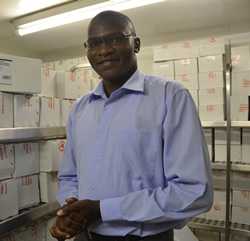
Recently I had the opportunity to speak with Tabu Collins, a Medical Epidemiologist for the Kenyan Ministry of Public Health and Sanitation (MOPHS). Tabu told me about his journey to becoming an epidemiologist and the public health challenges and successes in Kenya. Every day he sees the power of vaccines, not only to save but also to transform lives, giving children in Kenya an opportunity to grow up healthy, go to school, and live long productive lives.
Tabu grew up on the border of Nyanza and Western provinces. He can still recall the waves of measles, cholera, and typhoid that would strike his village. "It was something we learned to live with," he told me. Tabu speaks of how as a child he and his friends always had coughs and many ended up in the hospital, rehabilitation centers, or worse. "Looking back, I know it could have been avoided."
Solving a Malaria Mystery
April 25, 2012 5:00 pm ET - U.S. CDC-Kenya Office
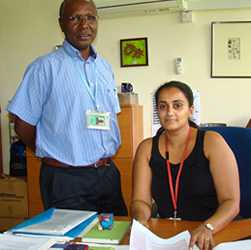
In late 2007, researchers at the KEMRI/CDC Field Research Station in Nyanza province in the western part of Kenya noticed a worrisome change in the rate of malaria infections. Malaria in this region had been declining since the 1980's but was now rising again for reasons that were not clear.
To look at why this was happening we start thirty-two years ago, at the beginning of collaboration between CDC and the Kenya Medical Research Institute (KEMRI), when a research facility was built in Nyanza province to focus primarily on malaria research. Located on the coast of Lake Victoria, Nyanza province was, and still is, the hottest area in Kenya for malaria infections. And eventually the Health and Demographic Surveillance System (HDSS) was created which precisely monitors the health and socio-economic well-being of 225,000 people in this area every 4 months.
Our Work in Kenya Reflects Our Global Commitment
March 15, 2012, 6:00 pm ET - U.S. CDC Kenya Office
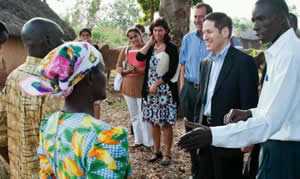
In January I had the privilege of traveling to Kenya to see first-hand some of the extraordinary international work done by CDC. During my stay, I was invited into homes of people who, everyday, simply by the circumstances of their surroundings, are dealing with significant challenges to maintain their health.
In rural western Kenya, I met with a grandfather who had lost six of his children from preventable causes; I met a woman in Kibera who faces the ongoing challenges of poverty of that urban slum.
Tuberculosis: The world cannot afford another phase of neglect
February 14th, 2012, 5:00 pm ET - Kevin Cain, U.S. CDC Kenya Office
Reposted from the Global Health Frontline News "
Notes from the field blog
"
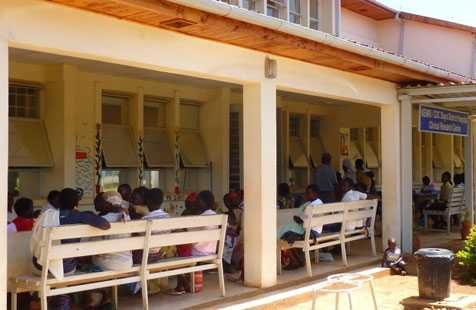
Cutting edge research is underway in Kisumu, Kenya, to find new ways to put an end to deaths from tuberculosis.
"My baby, whose name is Hope, was very ill and could not sit at 8 months of age. When she kept getting sicker, neighbors and friends contributed money to take me and my child to our rural home to await her death. Thanks to the DOT program and TB treatment, baby Hope is now strong and healthy. People still wonder what I did to her."
Lillian and Baby Rose: An HIV-Positive Mother Gets Help From CDC
October 5th, 2011, 6:00 pm ET - U.S. CDC Kenya Office
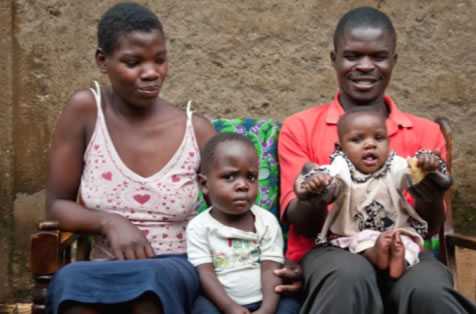
Lillian, a 20-year-old mom living in rural Nyanza province, first met Dr. Abraham Katana during her first antenatal visit at the Siaya District Hospital. She was five months pregnant and just learning she was HIV-positive. Dr. Katana, the study coordinator for KEMRI/CDC's Intermittent Preventive Treatment for malaria in Pregnancy (IPTp)-with Mefloquine study, encouraged her to be part of his malaria study because, as he put it, "The primary objective (of this study) is malaria prevention in HIV-positive pregnant women and we have committed to providing the best possible care to our participants, which includes HIV care."
Improving the Lives of Children in Kenya
August 29th, 2011 - U.S. CDC-Kenya Office
In April 2011, Everline, a resident of the Kibera community in Kenya, was approached by a community mobilizer. Talking with him was normal to her, but this time the information he had was different. He came to talk to her about a seasonal flu vaccine study that was being carried out by KEMRI/CDC. As he talked, Everline realized that it was important for her two school-aged children to be vaccinated. So on a Tuesday in June, during the tea break at her children's school, she picked them up and headed to Injili takatifu church, the nearest vaccination site. There, she met KEMRI/CDC staff who guided her through the vaccination process.
Everline's children were two of nearly 8,000 children between the ages of six months and 10 years who were vaccinated in the Kibera and Lwak communities in Kenya as part of the study. "We were overwhelmed on the first day because so many people came for the vaccine," notes KEMRI/CDC Field Coordinator Kennedy Alwenya.
A Pharmacist Motivated by Inspirational Women
August 9th, 2011 4:43 pm ET - U.S. CDC Kenya Office
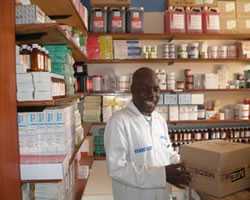
Fredrick Ochenge moves quickly and efficiently around Tabitha clinic's small pharmacy, filling up bottles, counting out pills, and chatting happily with everyone he encounters. When he calls a patient's name, they are met at the dispensary window by his wide smile and a warm greeting, as he carefully explains each medication's use, dose, and precautions. It is instantly clear to all who meet him: this is not your typical pharmacist.
For the last seven years, Ochenge has worked at the Tabitha clinic, flagship project of Carolina for Kibera, a non-profit working to affect positive change among the residents of Kibera, Africa's largest urban slum. Having joined the clinic during its early stages, Ochenge's institutional memory paints a picture of a thriving grassroots project: 'I have seen the clinic grow from a staff of two, to more than forty; from a one-room shanty to a beautiful building.' How Ochenge ended up in that 'beautiful building' is a story marked by tragedy and triumph, and the incredible influence of two inspirational women.
A Promising New Career in the Slums of Kibera
August 9th, 2011 2:28 pm ET - U.S. CDC Kenya Office
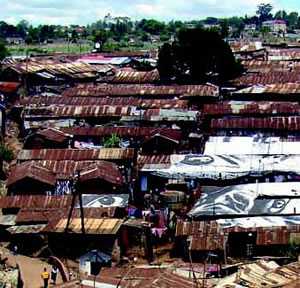
It has been six years, but Kennedy Odero can still remember perfectly the day he first crossed paths with U.S. CDC in Kenya. 'I was attending a local church function, and I heard an announcement that the CDC was looking for people to train as community health workers,' recalls Odero. 'At the time, I had another job, but it was not utilizing my skills appropriately.'
A graduate of prestigious Moi University in western Kenya, Odero had completed undergraduate degrees in both Social Studies and Public Administration. Hoping to find a job he could feel passionate about, he relocated to Nairobi soon after graduation and moved in with relatives in Kibera, one of Africa's largest slums. He immediately began job-hunting throughout Kenya's sprawling metropolis, but months passed and the right opportunity still eluded him. He had no way of knowing that he would find his ideal career, not in some prosperous Nairobi locality, but in the slum neighborhood he now called home.
The Snowball Effect—Battling Malaria on a Global Stage
June 22nd, 2011 - U.S. CDC-Kenya Office
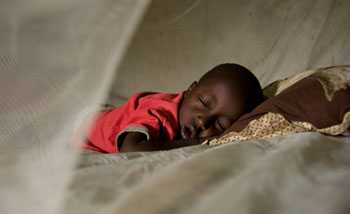
In a district hospital in western Kenya, more than 200 mothers and children crowd into a small room, hoping to be seen by the hospital's one outpatient healthcare worker. Inside the hospital is an even bleaker scene. Two, three, or even four seriously ill children lie piled on a single hospital bed. When the nurses prick their small arms to give them transfusions or medicine, their blood is pale pink instead of a healthy red, destroyed by the malaria parasites that have feasted on their tiny bodies.
These are images that Dr. Laurence Slutsker, the associate director for science in CDC's Center for Global Health, knows well. They have been burned into his memory for more than two decades—and are one of the many reasons he has dedicated his life to fighting malaria on a global scale.
Improving Health for Kenya's Refugees by Building Laboratory Capacity
March 9th, 2011 - U.S. CDC-Kenya Office

Not far from the Somalia border in Kenya lies the town of Dadaab, home to over 300,000 refugees in what is the largest refugee camp in the world. Refugees travel long distances, often by foot, without adequate food, water, sanitation, or shelter. They are faced with a host of medical problems which are compounded by the overcrowded conditions and limited access to care in the camps where they live. It is easy for infectious diseases to spread quickly in such conditions. In 2010, the Centers for Disease Control and Prevention (CDC) Division of Global Migration and Quarantine (DGMQ) responded to nine disease outbreaks in the Dadaab Refugee Camp, including cholera, H1N1 flu, measles, meningitis, and pertussis.
One Woman, One Community, Many Gains
March 1st, 2011 - U.S. CDC-Kenya Office
Jemima is a woman living with HIV in rural western Kenya. That, alone, does not make her unique. After all, rates of HIV in that region are among the highest in the world. Even so, Jemima set aside worries about her own infection and went to work. She founded a group in her community that offers emotional support and small loans to families touched by HIV.
But then Jemima's own HIV grew worse. A local volunteer found Jemima at home. She had diarrhea and had wasted to 77 pounds. Jemima was bedridden, and weak with oral thrush and skin infections. The volunteer quickly brought Jemima, her husband, and her sick grandchild to a U.S. government-supported health clinic.
Watch Videos
-
 Video: Global Disease Detectives - Answers from Kibera
Video: Global Disease Detectives - Answers from Kibera
1 min, 8 sec
October 5, 2010
- Page last reviewed: April 19, 2017
- Page last updated: April 19, 2017
- Content source:
Global Health
Notice: Linking to a non-federal site does not constitute an endorsement by HHS, CDC or any of its employees of the sponsors or the information and products presented on the site.


 ShareCompartir
ShareCompartir


